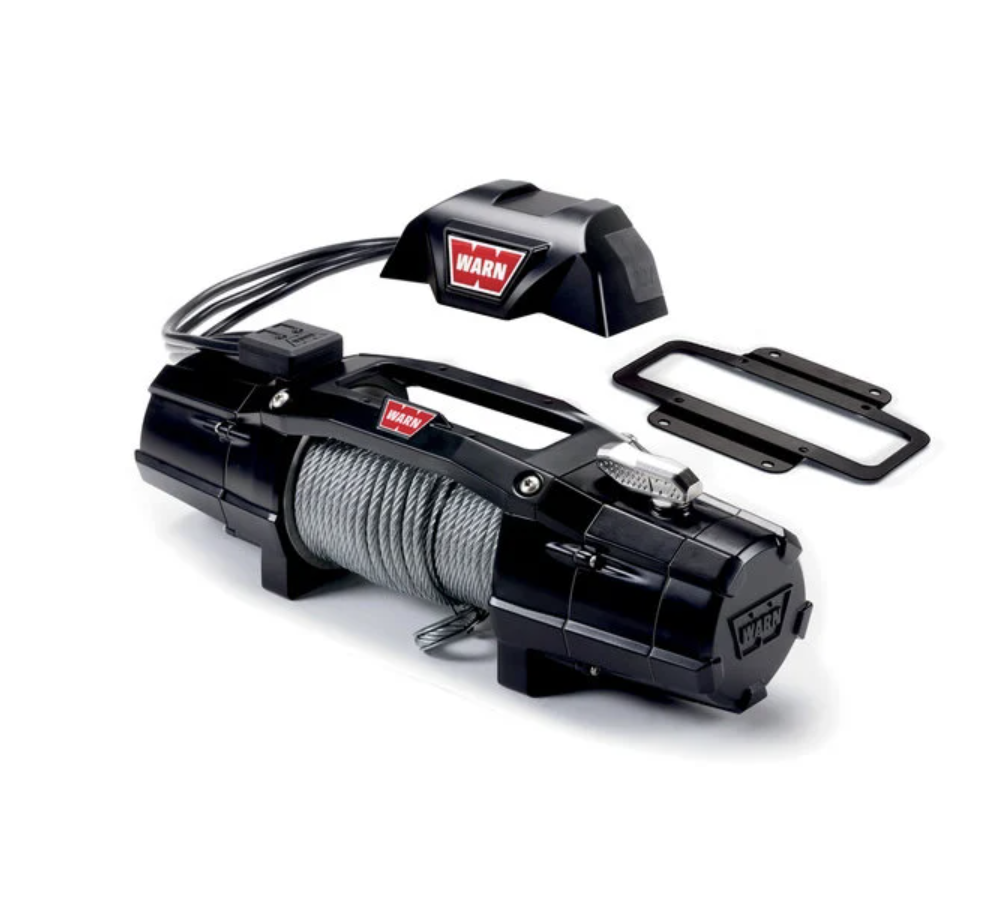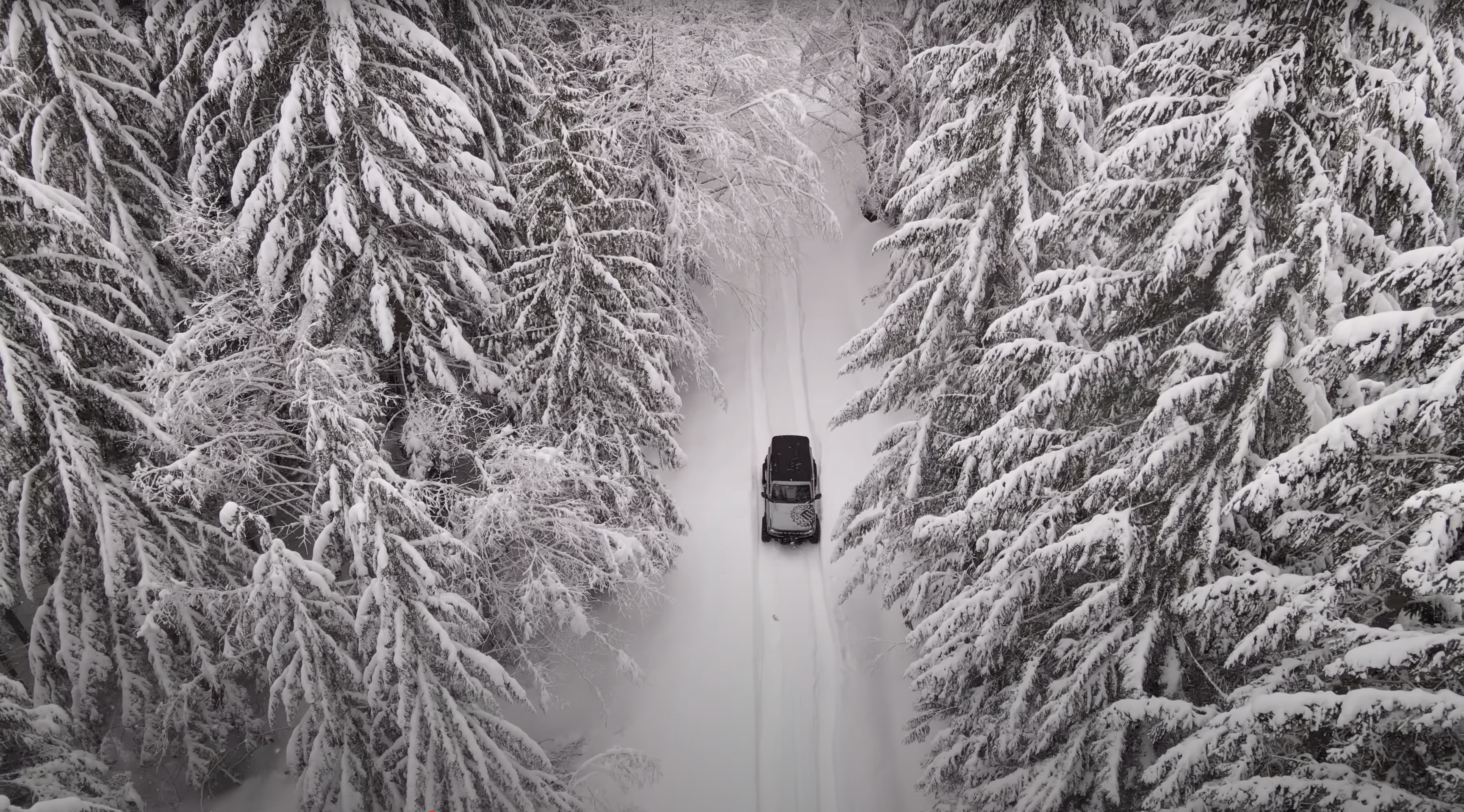
Winches: Where to Start?
Bigger must be better, right?
Ah… no.
First off, this is all subjective. There are thousands of different opinions out there. Social media and forums are full of “web wheelers” — folks who’ve read everything, quoted each other, and now claim to be experts without ever pulling line in the field.
This is not that.
This is based on 25+ years of actual installation, use, and testing experience — across brands and in real-world off-road conditions. And for the record: we officially don’t sell winches. Sure, we can get them for in-house installs, but it’s not our business focus. That said, designing, testing, and building bumpers and winch mounts forces us to stay deep in the winch world. So let’s get into it.
What Winch Should I Get?
Many default to “bigger is better.” It’s not. Most winches (unless you're talking premium-tier $$ units) achieve higher pulling power by gearing down — which means they pull slower. Same motor, same frame, just different gears.
Higher load-rated winches also use thicker rope. Thicker rope means less line on the drum — and you want all the line you can get. If you need more pulling power, use a snatch block (think: big pulley). It doubles your effective pulling power and cuts line speed in half — win-win.
Wire Cable or Synthetic Rope?
This could be its own article. In short: go with synthetic rope whenever possible.
It’s typically 20 lbs lighter and far safer. If a line breaks under load, do you want 22 lbs of steel or 2 lbs of plastic flying through the air? Exactly. Also, properly pre-stretched synthetic line doesn’t “snap back” like steel.
Synthetic is more forgiving of real-world winching — where things aren’t perfect. Most winches now come with synthetic from the factory. If not, you can upgrade later.
Just remember: if you go synthetic, ditch the roller fairlead. Use a Hawse-style fairlead instead. Roller fairleads can get dinged and damage your synthetic rope.
Wireless or Wired Remote?
A lot of experienced drivers will only use wired. Their reasoning? Wired controls have never acted up. Wireless units? Some have seen them trigger unexpectedly. And a runaway winch is not something you want.
Personally, I love wireless for re-spooling after a trail day. But on the trail? It’s always wired — looped up the hood, under the wiper, past the mirror, and into the cab.
Bottom line: wireless is convenient. But if you're tight on budget, spend that money on a recovery kit instead. You’ll need one anyway.
Integrated or Non-Integrated Winch?
This refers to the solenoid: is it built into the winch body, or can it be removed?
Most brands today offer removable solenoids. The all-in-one style may look compact, but they’re tall, harder to fit into bumpers, and more difficult to service. Many Toyota/Lexus models require moving the solenoid off the winch body to fit properly.
(We love you, FJ40 — you’ll take anything we throw at you.)
What Size Winch Do I Need?
An 8,000 to 10,000 lb winch is ideal for most Toyota and Lexus 4x4s. Anything bigger is a shorter winch rope and usually slower pulls. If you need more power — use a snatch block.
We’ve listed common Toyota/Lexus models below. If yours isn’t there, it may not have been built for the North American market or isn't body-on-frame with a two-speed transfer case. That’s our wheelhouse. If it doesn’t meet that, we probably haven’t tested it. (That’s for the web wheelers to argue about.)
What Brand Should I Trust?
We’re only recommending brands we’ve used — and used hard. If it's not mentioned, it’s because we don’t have direct experience or had negative results. (And yes, that changes over time.)
For example, from 2007 to 2018, we wouldn't recommend Warn — even with their HQ 50 miles away. But starting in 2017, under new leadership, they turned it around. By 2018, their quality and customer support were back on point.
Winch Recommendations by Price Point
This is as of August 2025:
High-End: $1,200 – $2,500
- Warn Zeon Series – Made in Oregon. Great quality and support.
- ComeUp Seal Gen 2 – Made in Taiwan. US distribution based in Oregon. A smaller company that owns most of its supply chain.
Mid-Range: $600 – $1,000
- Warn EVO Series – Made in China. Solid performance backed by Warn’s support.
- Go for the EVO 8-S or 10-S (the “S” is for synthetic rope). Steel line versions are often on sale — swap in a synthetic and a Hawse fairlead and come out ahead.
Entry-Level: $230 – $599
- Harbor Freight. Badlands ZXR9500 converted to synthetic rope.
Yeah — you read that right. Ten years ago, no way. But they’ve put in the work. Their big win? Local support. With 1,600+ stores, it's estimated that 90% of the U.S. population lives within 100 miles of one. That means most people are within a couple hours of a no-hassle warranty exchange.
That’s a huge advantage. Compare that to a $3,400 Warn M8274 — which you’ll have to ship back (at your cost) for warranty consideration. Ok, most M8274s, even made in the 80s, are still working, but you get the point.
Also, good on your local 4x4 shop if they help with warranty issues. But if you’re traveling out of state? Not likely.
Caution: Harbor Freight’s “make it look bigger than Warn” problem.
Their Apex 12K looks impressive, but it’s oversized and won’t fit in most bumpers. And it only has 50' of rope — not great.
Instead, grab the ZXR9500:
- Compact housing.
- Solenoid can be relocated.
- Only comes with steel rope and roller fairlead ("fish lips"), but...
- Swap in synthetic rope and a Hawse fairlead for ~$200 and you'er golden.
Note to HF: You’re close. Build a 10K Apex compact with a synthetic rope and offer a remote solenoid mount kit. It’ll sell like crazy. Maybe Casey LaDelle can help convince them. (YouTuber who uses HF winches with his commercial towing business)
Winch Maintenance Matters
Stretch your rope after installation. No winch comes with pre-stretched rope. We’ve got a video on our YouTube page showing how and why.
Use your winch regularly. If you park a car for 3 years, would you expect it to run perfectly? Same with winches. They’re mechanical and electrical. At minimum, spool it out and back in once a year to warm up internal parts, circulate grease, and remove moisture.
Before every trip, do a quick test. Don’t wait until you’re stuck to find out it doesn’t work.
Final Thoughts
Get out there and wheel. Bring your buddies. Build up your recovery kit — tree savers, shackles, winch extension straps. (Important: never use a recovery strap as a winch extension — they’re designed to stretch. Kinetic danger warning!)
Take a winch class. Learn from others with more experience. The more time on the trail, the more you’ll learn.
Winch Capacity Recommendations by Toyota and Lexus Models
8,000–10,000 lb Winch Recommended
Toyota:
- Land Cruiser: 40 / 80 / 100* / 250 Series
- 4Runner
- FJ Cruiser
- Tacoma
Lexus:
- GX470
- GX460
- GX550
- LX450
- LX470*
10,000–12,000 lb Winch Recommended
Toyota:
- Land Cruiser: 100* / 200 / 300 Series
Lexus:
- LX470*
- LX570
- LX600
These full-size models benefit from the added pulling power, especially when fully loaded or overland-equipped.
*The 100 Series and LX470 are at the upper end of this range. A 10,000 lb winch is recommended for better coverage due to its weight. Depending on the build, weight-wise, one may bump into the 12k winch.
🔧 Want More Winch Tips and Trail Content?
Follow us on Instagram for behind-the-scenes installs, tech tips, recovery gear setups, and wheeling stories.
📸 @metaltech4x4
#BuiltByAdventurers #OffRoadRecovery #Metaltech4x4
- Get your truck dirty, please.
About the Author
Mark Hawley is a Toyota Land Cruiser Association (TLCA) Hall of Fame inductee, recognized for his lifelong dedication to the off-road community. He founded Metal-tech 4x4 in his garage in 2000 and has been wheeling Toyota FJ40s for over 39 years.
For more than two decades, Metal-tech 4x4 has designed, built, and installed award-winning off-road armor, rock sliders, bumpers, roll cages, and specialized suspension components. These products are tested in real-world conditions across the U.S., Central America, and South America—constantly evolving through hands-on feedback and use.
Company Awards Include:
- TLCA Business of the Year - 2012
- SBA Emerging Leaders Award - 2014
- Portland Business Journal Manufacturer of the Year - 2020
TLCA Hall of Fame:
In 2023, Mark was inducted into the TLCA Hall of Fame alongside Kurt Williams and Georg Esterer, at that time joining an elite group of just 20 individuals recognized by the TLCA since its founding in 1976.



